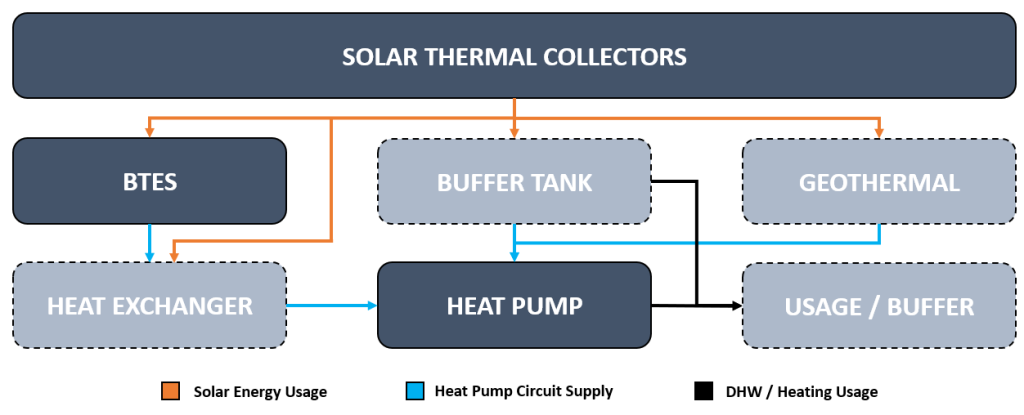
Control systems for efficient thermal networks
Purpose and importance of controlling systems in thermal energy production and storage – a case study from Kaustinen.
With rising energy costs and a growing desire for more sustainability, energy management has become a key objective for companies, residential districts, and society. The environmental and economic impact of energy dependency, as demonstrated by the Ukrainian war, has created a desire for more self-sufficiency in Europe. Achieving this goal requires an increase in energy efficiency and a reduction in external, conventional energy supply. This can be accomplished by efficient power control and the use of renewable energy sources. To illustrate the effects and functionality of an optimised control system in thermal networks, a case study was conducted in a school building in the municipality of Kaustinen, Finland.
What is a thermal network and why is it necessary?
For a reliable heat supply and an increase in efficiency, different thermal devices can be connected in a compound system. A thermal network can include heat sources, heat sinks, heat storage units, and heat exchangers. These components can be connected in various ways to achieve a more efficient system. In particular, this can include the use of waste heat from industrial plants or the use of solar thermal energy. The result of implementing a thermal network is an improvement in efficiency and self-sufficiency. This implies a reduction in heat losses and external energy demand.
Key components and technologies
In addition to solar thermal energy, heat pumps, and long-term storage will contribute significantly to future heat supply. One promising seasonal storage solution is the Borehole Thermal Energy Storage (BTES) technology. This advanced storage approach can store excess heat from the summer months until winter. Especially for efficient heat storage, optimised control is essential. An exemplary illustration of a combination of thermal applications is shown in the following diagram. While the solar thermal system acts as a renewable energy source, the BTES serves as a storage medium, and the heat pump functions as an electrically driven heat source with high efficiency.

Control systems as the unifying factor
Connecting the different thermal components requires an overlying control system to manage the heat flows. For optimal operation, a control system must analyse the current conditions and capabilities of the network. Based on this, the controller has to make independent decisions that guarantee optimal energy usage. This requires the use of various sensors that reflect the on-site conditions. The incoming signals must be processed and interpreted centrally by a programmable logic controller, resulting in a control decision. The control system must therefore be able to understand and speak different communication protocols. This is necessary to send the right signals to valves, pumps, heat pumps, and other control devices. It allows the thermal network to be controlled and the correct power flows to be guaranteed.
Enhancing cost efficiency and sustainability
A well-designed control system can improve industrial scalability. The number of control units produced reduces the investment cost per unit for complex systems. That lowers the burden of installing thermal grids, encouraging its use in the future. This will further promote the spread of thermal networks.
By using a control system to manage a thermal network, the external energy demand can be reduced. An increased heat pump efficiency and a reduced overall energy demand can be observed. In particular, the electrical energy consumption of a heat pump system can be reduced, resulting in lower running costs and a reduced impact on climate change. Through efficient control, the sustainability of the thermal energy supply can be improved, most notably through reduced carbon dioxide emissions.
Bachelor’s Thesis
Papenfuß, T. (2023). Control and Monitoring System Design for a Thermal Compound Network. Turku University of Applied Sciences, Energy and Environmental Engineering.